Complete Solutions to AIPMTNEET Questions of chapter ELECTRIC CHARGE, FIELD & FLUX of Class 12 book with complete answers and questions
| Class 12 | PHYSICS |
| Chapter | ELECTRIC CHARGE, FIELD & FLUX |
| A2Z | AIPMTNEET Questions |
| Number Of Questions | 24 |
| Academic Year | 2023-24 |
A simple pendulum of period `T` has a metal bob which is negatively charged. If it is allowed to oscillate above a positively charged metal plate, its period will
View SolutionThe electric intensity due to a dipole of length `10 cm` and having a charge of `500 muC`, at a point on the axis at a distance `20 cm` from one of the charges in air is
View SolutionCathode rays travelling from east to west enter into region of electric field directed towards north to south in the plane of paper. The deflection of cathode rays is towards
View SolutionA charge `q` is located at the centre of a cube. The electric flux through any face is
View SolutionAn electron is moving round the nucleus of a hydrogen atom in a circular orbit of radius `r`. The coulomb force `vec(F)` between the two is (where `k=(1)/(4piepsilon_(0)))`
View SolutionA square surface of side `L m` is in the plane of the paper. A uniform electric field `vec(E )(V//m)`, also in the plane of the paper, is limited only to the lower half of the square surface (see figure). The electric flux in `SI` units associated with the surface is:
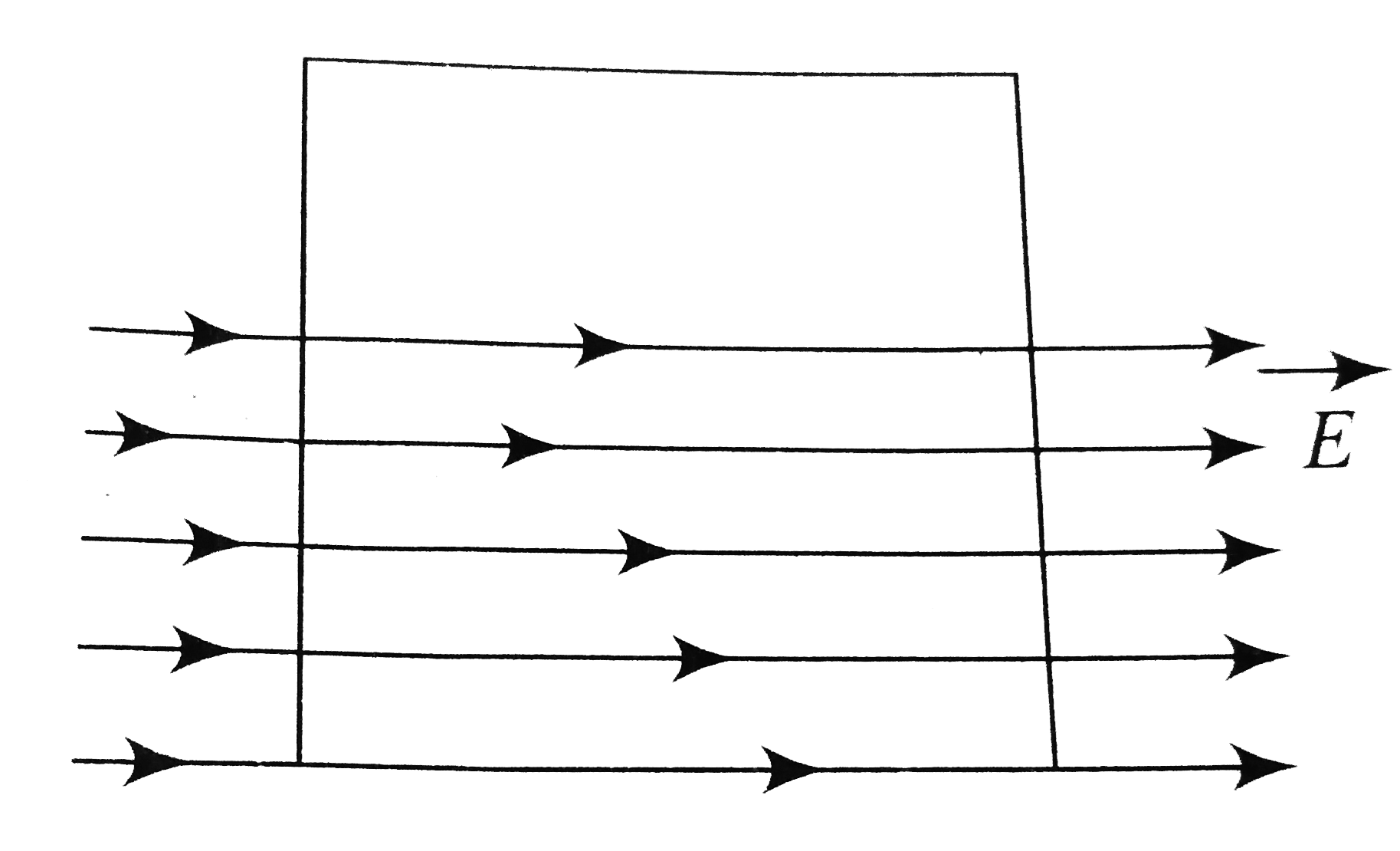
View SolutionAn electric dipole of moment `vec(P)` is lying along a uniform electric field `vec(E )`. The work done in rotating the dipole by `90^(@)` is:
View SolutionA hollow cylinder has a charge `qC` within it. If `phi` is the electric flux in unit of voltmeter associated with the curved surface `B` the flux linked with the plance surface `A` in unit of voltmeter will be
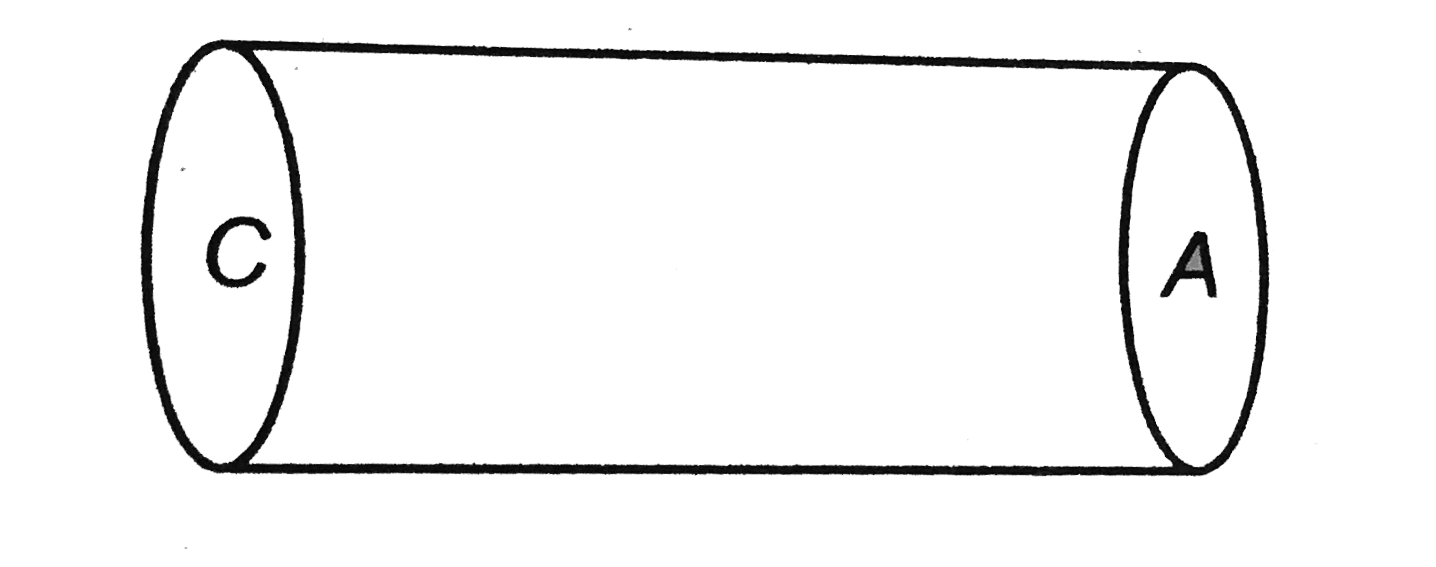
View SolutionThe point charges `+ q, -2q` and `+ q` are placed at point `(x = 0, y = a, z = 0), (x = 0, y = 0, z = 0)` and `(x = a, y = 0, z = 0)`, repectively. The magnitude and direction of the electric dipole moment vector of this charge assembly are
View SolutionA thin conducting ring of radius `R` is given a charge `+Q`, Fig. The electric field at the center `O` of the ring due to the charge on the part `AKB` of the ring is `E`. The electric field at the center due to the charge on part `ACDB` of the ring is
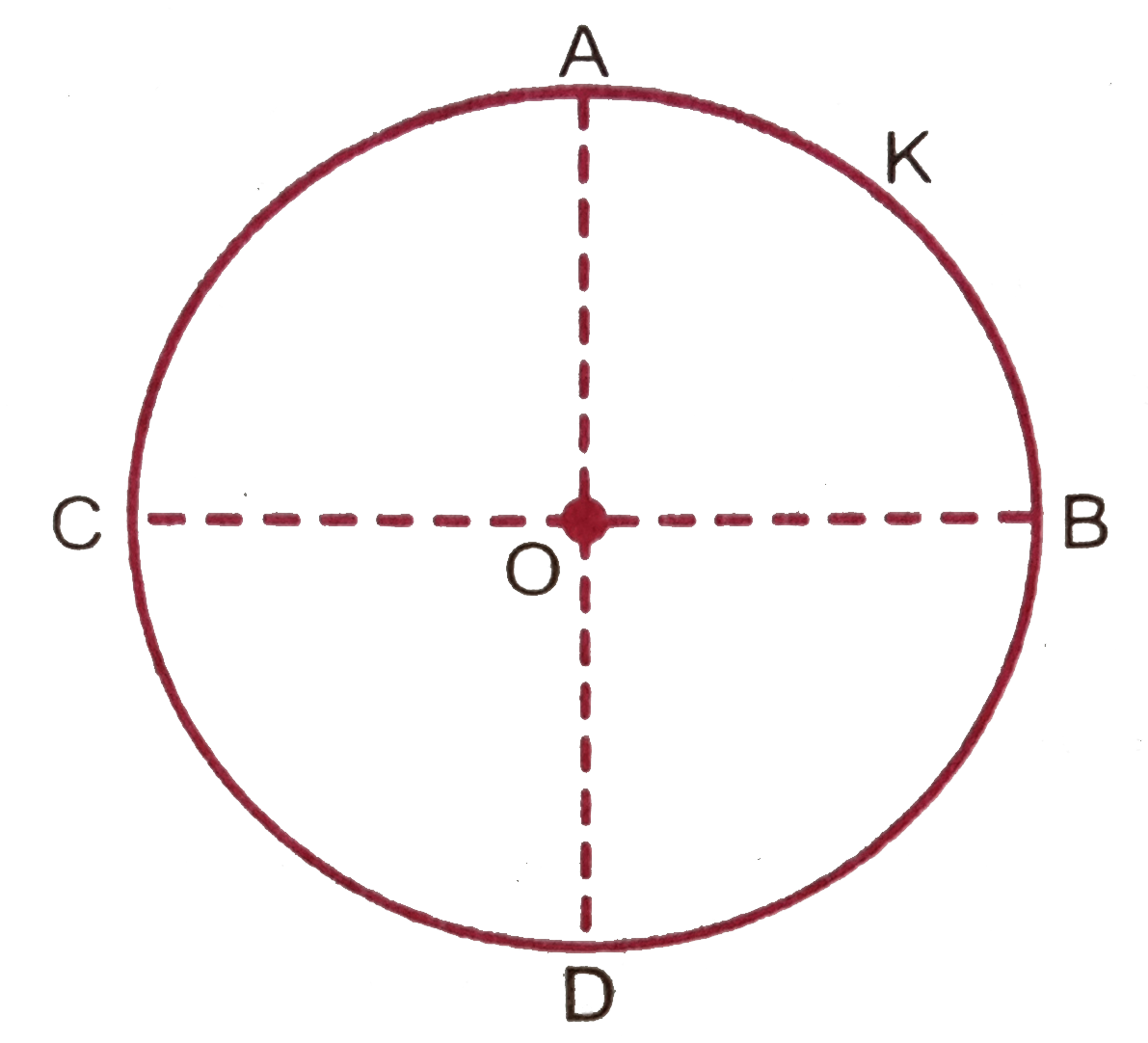
View SolutionThe mean free path of electrons in a metal is `4 xx 10^(-8)m` The electric field which can give on an average `2eV` energy to an electron in the metal will be in the units `V//m`
View SolutionTwo positive ions , each carrying a charge `q` , are separated by a distance `d`.If `F` is the force of repulsion between the ions , the number of electrons missing from each ion will be (`e` being the charge on an electron)
View SolutionA square surface of side `L` metre in the plane of the paper is placed in a uniform electric field `E ("volt"//m)` acting along the same place at an anlge `theta` with the horizontal side of the square as shown in figure. The electric flux linked to the surface in uint of `V-m` is
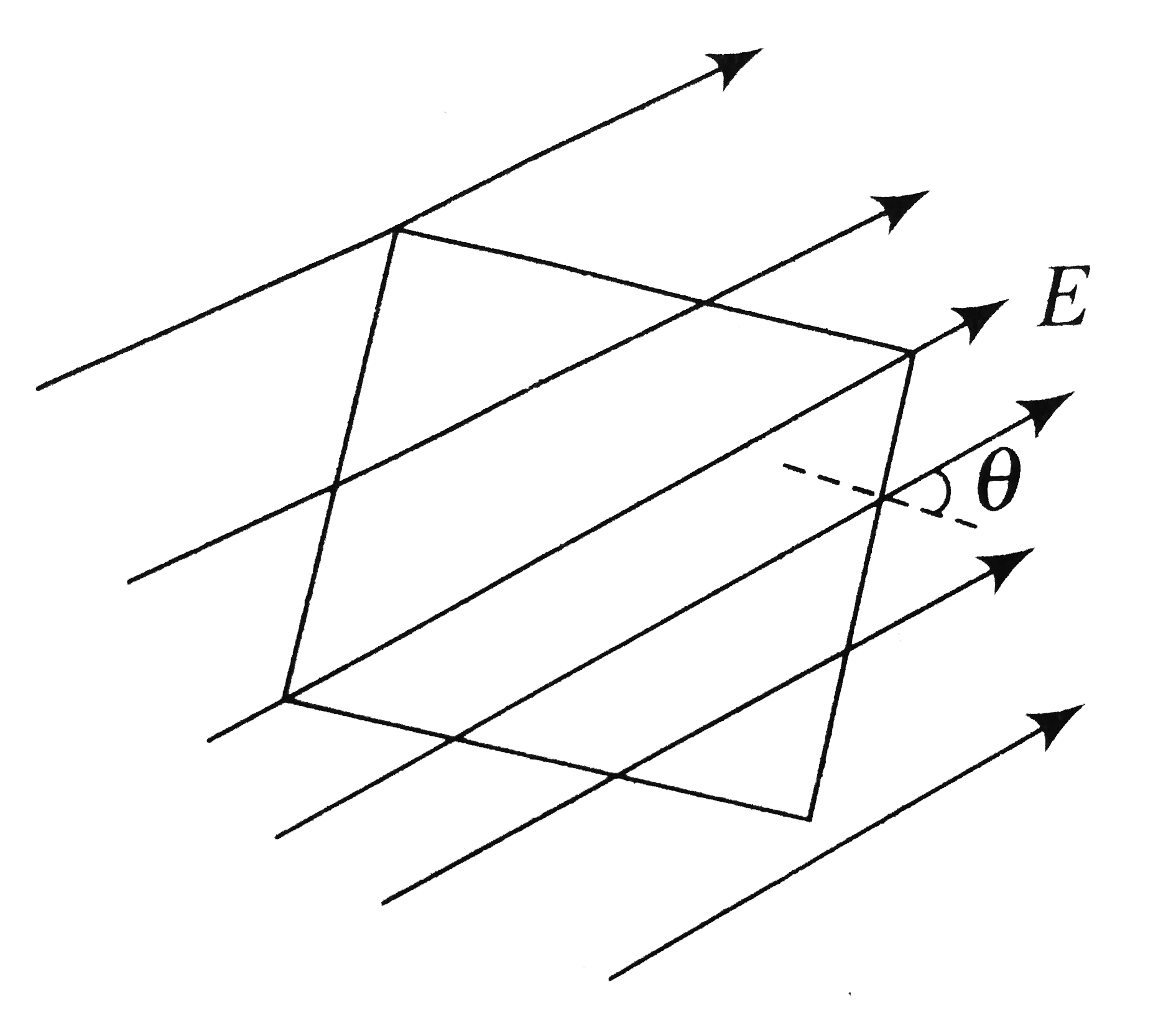
View SolutionThe electric field at a distance `3R//2` from the centre of a charge conducting spherical shell of radius `R` is `E`. The electric field at a distance `R//2` from the centre of the sphere is
View SolutionA charge `Q` is enclosed by a Gaussian spherical surface of radius `R`. If the radius is doubled, then the outward electric flux will
View SolutionThe electric potential V at any point x, y, z (all in meters) in space is given by `V=4x^2` volts. The electric field at the point (1m, 0, 2m) is……………..`V//m`.
View SolutionThree charges each`+q`, are placed at the corners of an isosceles triangle `ABC` of sides `BC` and `AC, 2a, D` and `E` are the mid-points of `BC` and `CA`. The work done in taking a charge `Q` from `D` to `E` is
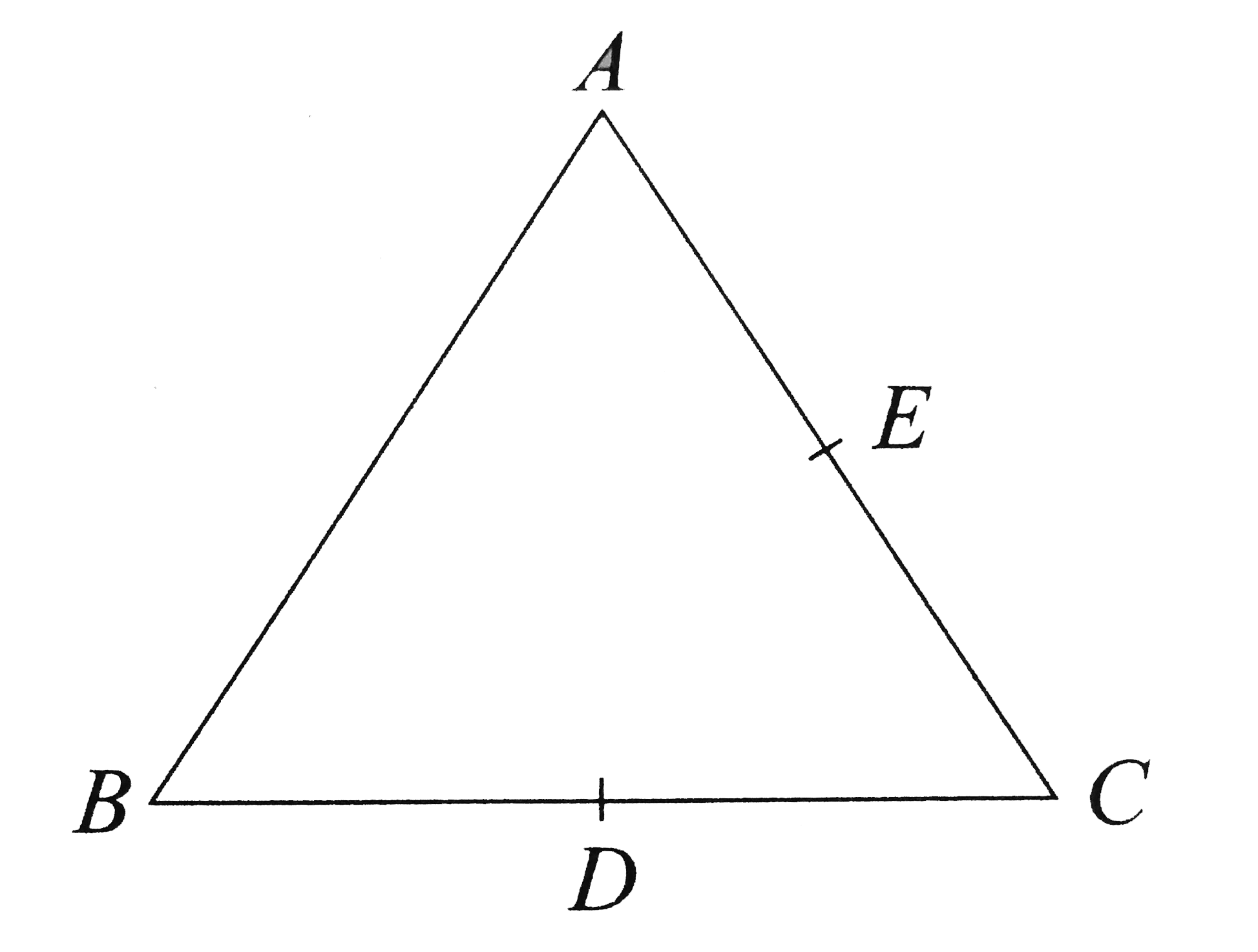
View SolutionAn electric dipole moment `p` is placed in an electric field of intensity `'E'`. The dipole acquires a position such that the axis of the dipole makes an angle `theta` with the direction of the field. Assuming that the potential energy of the dipole to be zero when `theta= 90^(@)`, the torque and the potential energy of the dipole will respectively be
View SolutionWhat is the flux through a cube of side `'a'` if a point charge of `q` is at one of its corner :
View SolutionTwo metallic sphere of radii `1 cm` and `3 cm` are given charges of `4xx10^(-2)C` and respectively. If these are connected by a counducting wire, the final charge on the bigger sphere is
View SolutionTwo path balls carrying equal charges are suspended from a common point by strings of equal length, the strings are rightly clamped at half the height. The equilibrium separation between the balls, now becomes :
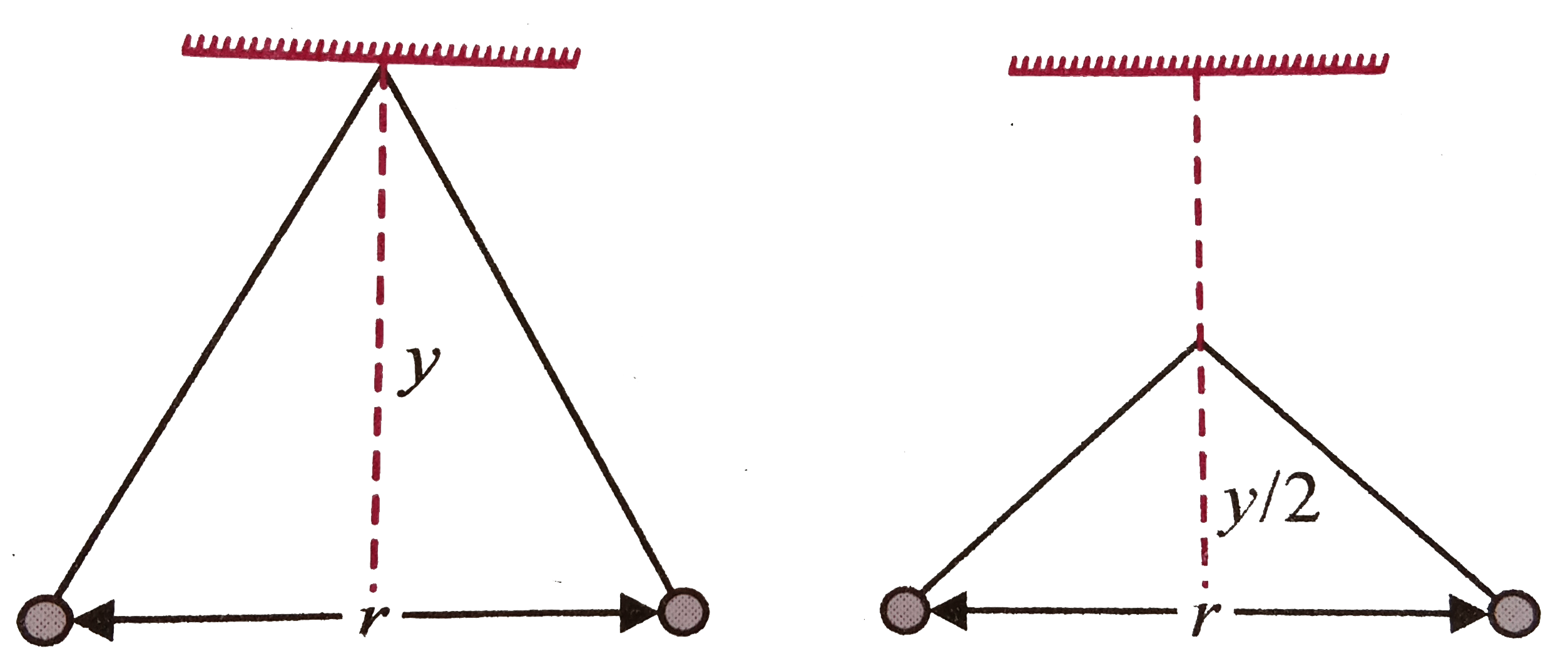
View SolutionThe electric field in a certain region is acting radially outwards and is given by `E=Ar. A` charge contained in a sphere of radius `'a'` centred at the origin of the field, will given by
View SolutionAn electric dipole is placed at an angle of `30^(@)` with an electric field intensity `2xx10^(5)N//C`. It experiences a torque equal to `4Nm`. The charge on the dipole, if the dipole length is `2 cm`,-
View SolutionSuppose the charge of a proton and an electron differ slightely. One of them is `-e`, the other is `(e+Deltae)`. If the net of electrostatic force and gravitational force between two hydrogen atoms placed at a distance `d` (much greater than atomic size) apart is zero. Then `Deltae` is of the order of [Given mass of hydrogen `m_(h)=1.67xx10^(-27)kg`]
View Solution
AIPMTNEET Questions questions and complete solutions for chapter ELECTRIC CHARGE, FIELD & FLUX of A2Z PHYSICS (HINGLISH) of Class 12